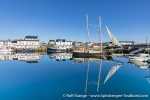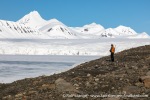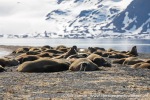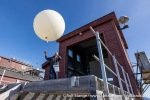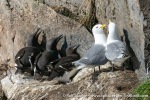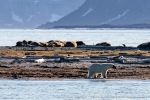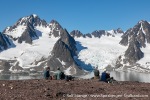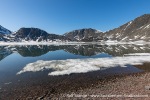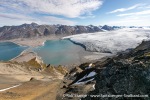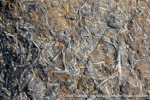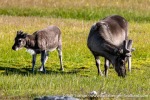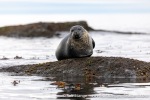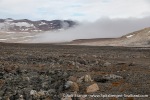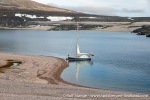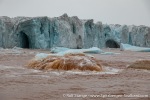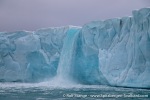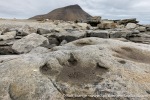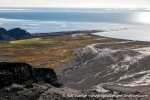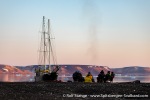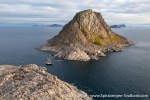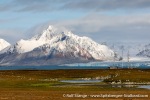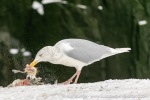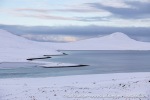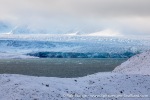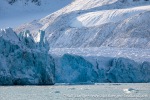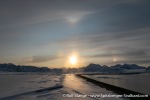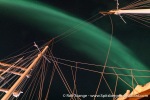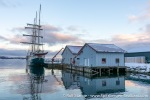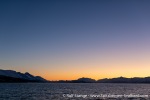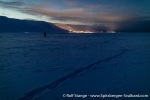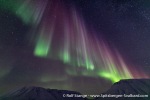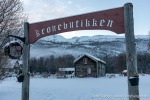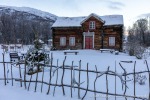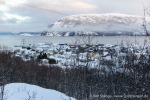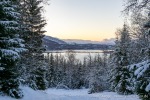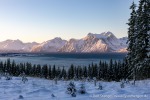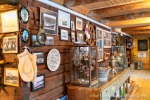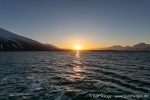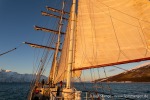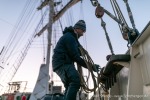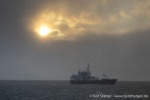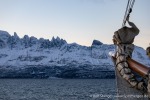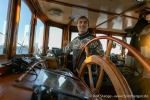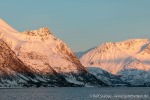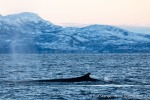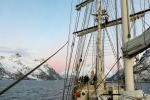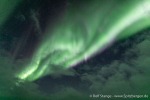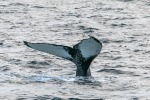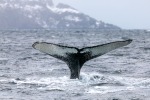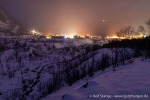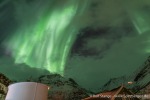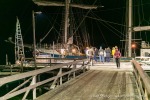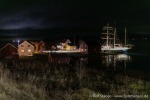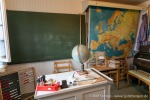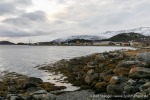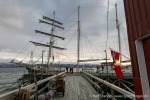-
current
recommendations- Liefdefjord
New page dedicated to one of Spitsbergen's most beautiful fjords. Background information and many photos.
- New Spitsbergen guidebook
The new edition of my Spitsbergen guidebook is out and available now!
- Liefdefjord
New page dedicated to one of Spitsbergen's most beautiful fjords. Background information and many photos.
Page Structure
-
Spitsbergen-News
- Select Month
- May 2025
- April 2025
- March 2025
- February 2025
- January 2025
- December 2024
- November 2024
- October 2024
- September 2024
- August 2024
- July 2024
- June 2024
- May 2024
- April 2024
- March 2024
- February 2024
- January 2024
- December 2023
- November 2023
- October 2023
- September 2023
- August 2023
- July 2023
- June 2023
- May 2023
- April 2023
- March 2023
- February 2023
- January 2023
- December 2022
- November 2022
- October 2022
- September 2022
- August 2022
- July 2022
- June 2022
- May 2022
- April 2022
- March 2022
- February 2022
- January 2022
- December 2021
- November 2021
- October 2021
- September 2021
- August 2021
- July 2021
- June 2021
- May 2021
- April 2021
- March 2021
- February 2021
- January 2021
- December 2020
- November 2020
- October 2020
- September 2020
- August 2020
- July 2020
- June 2020
- May 2020
- April 2020
- March 2020
- February 2020
- January 2020
- December 2019
- November 2019
- October 2019
- September 2019
- August 2019
- July 2019
- June 2019
- May 2019
- April 2019
- March 2019
- February 2019
- January 2019
- December 2018
- November 2018
- October 2018
- September 2018
- August 2018
- July 2018
- June 2018
- May 2018
- April 2018
- March 2018
- February 2018
- January 2018
- December 2017
- November 2017
- October 2017
- September 2017
- August 2017
- July 2017
- June 2017
- May 2017
- April 2017
- March 2017
- February 2017
- January 2017
- December 2016
- November 2016
- October 2016
- September 2016
- August 2016
- July 2016
- June 2016
- May 2016
- April 2016
- March 2016
- February 2016
- January 2016
- December 2015
- November 2015
- October 2015
- September 2015
- August 2015
- July 2015
- June 2015
- May 2015
- April 2015
- March 2015
- February 2015
- January 2015
- December 2014
- November 2014
- October 2014
- September 2014
- August 2014
- July 2014
- June 2014
- May 2014
- April 2014
- March 2014
- February 2014
- January 2014
- December 2013
- November 2013
- October 2013
- September 2013
- August 2013
- July 2013
- June 2013
- May 2013
- April 2013
- March 2013
- February 2013
- January 2013
- December 2012
- November 2012
- October 2012
- September 2012
- August 2012
- July 2012
- June 2012
- May 2012
- April 2012
- March 2012
- February 2012
- January 2012
- December 2011
- November 2011
- October 2011
- September 2011
- August 2011
- May 2011
- April 2011
- March 2011
- February 2011
- January 2011
- December 2010
- November 2010
- September 2010
- August 2010
- July 2010
- June 2010
- May 2010
- April 2010
- March 2010
- February 2010
- November 2009
- October 2009
- August 2009
- July 2009
- June 2009
- May 2009
- April 2009
- March 2009
- February 2009
- January 2009
- December 2008
- November 2008
- October 2008
- August 2008
- July 2008
- June 2008
- May 2008
- April 2008
- March 2008
- February 2008
- April 2000
- Select Month
-
weather information
-
Newsletter

| Guidebook: Spitsbergen-Svalbard |
Home →
Yearly Archives: 2023 − News & Stories
My own review Spitsbergen 2023 – happy new year!
Watching the big wide world in 2023 was in part pretty painful. Going further into that is not what I want to do here – that is done by others elsewhere. And in contrast, it is quite a pleasure for me to look back at my own year 2023, looking at “my” little arctic world. From the beginning in the polar night to the first miles under sail with Meander in Norway to a long, beautiful arctic summer in Spitsbergen, with good old Antigua, witht the beautiful Meander and the adventurous Arctica II. And finally back to a lot of darkness – beautiful light, that is! – in mainland Norway.
I want to use the opportunity once again to thank everybody who was part of this big journey and who contributed to making it so much fun! Big thanks to all of you, to fellow travellers, captains and crews, offices, friends and family.
And now I am looking forward to 2024, to more time spent up north, to a lot of beauty and exciting experiences shared with good people. We will see what the year brings – it is the last year of the Antigua up north, and it may be the last year we can sail in Spitsbergen with the freedom (within good regulation!) that we have enjoyed so far. Strangely, we still don’t know when and how this will change. So there is nothing really to add to the update from January 2023.
But in any case, I am very confident that the summer of 2024 will bring a lot of arctic nature and beauty.
I want to thank the year 2023 and all who were and are a part of it with this gallery of impressions. Those who were with me on one or the other trip may recognize good memories … and for those who were not on board, I hope you enjoy the photos nevertheless. They are not necessarily all the 5 star number one calendar picture choice images, but rather representative of my own experience, enjoying the wild beauty in silence and often in places that few people ever have heard about, let alone been to.
Enjoy!
With all this said, I wish you a happy near year 2024! May it bring peace to the world, at least some more than the previous two years … 🙏
Spitsbergen review of (gallery)
- gallery anchor link: #gallery_2977
Click on thumbnail to open an enlarged version of the specific photo.
Energy prices in Longyearbyen on the rise
Energy prices are a matter of debate in many countries and places. Longyearbyen is no exception.
A new energy solution to replace the old coal-fired power plant has been discussed in Longyearbyen for many years. In October, the coal plant was finally taken out of service and replaced with diesel generators. These are, on the long term, to be replaced with more environmentally friendly, renewable energy sources – that is, at least, the idea.

Longyearbyen’s old coal power plant was taken out of service in October 2023.
That is an expensive process for a small town. Energy has always been expensive in Longyearbyen, and a significant price rise is to come soon.
In order to save smaller customers from increasing costs, the community council Longyearbyen Lokalstyre has decided to pass the price rise on to the four largest energy buyers. These are Avinor (airport), KSAT (satellite antennas on Platåberg), Store Norske Spitsbergen Kulkompani (mining, the housing section is not concerned) and Forskningsparken/UNIS (science). Next to size and high energy consumption, these four have in common that they are all state-controlled.
As could be expected, the idea of being the only payers for higher energy prices is not met with great enthusiasm by these four. KSAT CEO Ole Kokvik has said that KSAT may have to consider other locations in the future, a solution that is unlikely to work for the airport. Store Norske may reconsider the operation of mine 7. Currently, it is planned to remain in production until the summer of 2025.
The discussion is clearly not over yet.
Norwegian diesel sold to Russian fishing ships
Norwegian diesel for Russian ships? That was common practice until just a few weeks ago. The ships in need for fuel did not sail to Norwegian ports such as Longyearbyen, but the floating fuel stations came to them, at sea – in shape of bunker vessels on the Barents Sea, both on the Norwegian and on the Russian side of the maritime border, according to AIS data of Norwegian bunker ships.
This attracted a lot of public attention when it became public in November, with a wide agreement that this practice is unwanted seen in the light of the Russian war against the Ukraine. Major suppliers on the Norwegian market quickly distanced themselves from this trade and confirmed not to deliver to Russian customers, but could not guarantee this for smaller in-between distributors.

Fishing ships prefer to get supplies near the fishing grounds, rather than sailing to a distant ports. This image shows two Russian ships exchanging fish and goods in Bellsund.
In early December, the Norwegian ministry of foreign affairs confirmed that it is forbidden for Norwegian ships to supply Russian ships at sea with fuel, as Svalbardposten wrote. This includes international and Russian waters. To fulfill old contracts, deliveries were under certain conditions legal until early March 2023 but not anymore later. Since then, Russian ships can only buy Norwegian fuel for their own use in certain Norwegian ports (Longyearbyen, Båtsfjord, Kirkenes and Tromsø). This is hardly attractive for most fishing ships as they don’t want to leave their operating areas.
Any delivery at sea by Norwegian ships to Russian customers is, in other words, illegal since March. Suppliers who nevertheless delivered diesel between March and November appear to have been unaware or confused about the legal situation.
Antarktikos: excellent reading materials about the other end of the world
This does not have anything to do with Spitsbergen, but for all enthusiasts of the polar regions – north and south – Antarktikos is som really good food for brain, eye and soul.
Antarktikos is a magazine that has set a high standards with regards to both contents and layout with the first edition two years ago. It is not another one of the usual glossy magazines that come every month or so with the usual travel stories and packed witih advertising – no, it is actually quite the contrary: full of interesting contribution covering a wide range of subjects from science to art and a lot of other stuff on either side of these, with a layout that makes it a pleasure to read. And indeed no advertising. That does set a high level, indeed.

The first edition of “Antarktikos”
(and this author, spontaneously and badly photographed by himself …).
The second edition is about to be released now in December. And to make ends meet, there is a crowdfunding campagin going until tomorrow (Saturday, 2 December) on Kickstarter – a few Euro are still missing, come on, let’s get that done! Everything is possible, from simply ordering the second edition for a too cheap price of 15 Euro to substantial support.
I am in, with pleasure.
Mobile network in Ny-Ålesund
If you have visited Ny-Ålesund in recent years, then you have experienced something of a technical-cultural paradox: a settlement that, in many ways, is very modern and technically advanced, but you couldn’t use your mobile phone because there was no mobile network.
Was. That is a matter of the past now.

Ny-Ålesund: a mast, but no antenna.
Things have changed. Now you can use your mobile phone there as elsewhere.
It has always been said that the electromagnetic field that comes with mobile network disturbs certain highly sensitive scientific technology. But that does actually not apply for the frequencies of mobile network. It is indeed the case, however, for other frequencies, including those in the range of wifi/WLAN and Bluetooth. These remain forbidden in Ny-Ålesund.
Culturally, this is a major step for the small settlement which has been mobile-phone-free until the early winter of 2023. It is considered to keep social places such as the messroom mobile phone free.
But for everyday life, it is safe to assume that most people will welcome it, both those who live and work there as well as tourists. Also scientific work will benefit from easier communications, for example as some measuring devices can now send their data rather than checking them regularly in the field. Field safety will obviously also benefit.
And as mentioned above: Wifi/WLAN and bluetoth will remain forbidden.
Pepper spray for defence against polar bears?
This is about an issue which is about life and limb potentially of polar bears and humans, so let’s make a few things clear before we get into it: pepperspray (or bear spray) is currently not recommended by Norwegian authorities as a tool of deterrence or defence against polar bears and it is currently not legally available in Norway including Svalbard for private persons.
And: this is not a discussion about using pepperspray against aggressive polar bears in open terrain. Attempting this would literally be suicidal.
Having said that: there is an ongoing discussion about the use of pepperspray in Spitsbergen, even though it is, so far, an entirely theoretical one and authorities do not appear to be very enthusiastic about it. But cases like the one in August where a polar bear was shot in Krossfjord as he attempted to break into a hut with people inside certainly contribute to the discussion.

“Hello, anyone at home?” Pepperspray may well save the life of a polar bear in a situation like this. Here, everything went well in the end.
And it is actually exclusively about cases where people can act from the relative safety of a hut (or a closed vehicle etc.). The polar bear in August was not the first one that was shot while breaking into a hut by people inside.
So what it is about now? Fred Skancke Hansen is safety officer at UNIS and responsible for field safety courses and safety during field work of students and scientists. As such, he has gathered relevant experience and knowledge over years. Hansen told Svalbardposten that he is open for the discussion about pepperspray and positive about its use in certain situations. It talks about an “additional tool” in the toolbox that may prevent lethal shooting in situations where people would have the opportunity to use pepperspray out of a situation of relative safety. Also Hansen points out that the idea is not to be in the field with pepperspray as the only tool of self defence against polar bears.
The point of pepperspray is that it may safe a polar bear from being shot and at the same time the bear would most likely take with him that the vicinity of huts and people is something to avoid in the future. And this would be the best possible outcome of such a situation.
The reason for Hansen’s recent statement is a paper published in December 2022 in Wildlife Society Bulletin, which adds factual weight to the argumentation that pepper spray is effective against polar bears.
A speaksperson of the Sysselmester said that pepperspray is not legally available in Spitsbergen. It would require a change on a legal (government & parliament) level to change this. Until this possibly happens, the discussion will remain a purely theoretical one, at least for Svalbard.
The polar night in Spitsbergen
Thu
16 Nov
2023
The magic of the early polar night in Spitsbergen. A day in Adventdalen, not far from Longyearbyen. Some impressions of a day on 78 degrees north in mid November from noon with some twilight to real darkness which comes in the early afternoon.
- gallery anchor link: #gallery_2958
Click on thumbnail to open an enlarged version of the specific photo.
From Sørkjosen to Hamnes and Tromsø
Wed
15 Nov
2023
The last two days of this trip. A morning in Sørkjosen, a scenic (if whale-free) afternoon in Reisafjord en route to the lovely little place Hamnes on Uløya. There we could enjoy a morning with some walks in brilliant weather: light frost, clear sky and the beautiful light of the low winter sun.
Then we finished a very successful trip in the far north of Norway with the last miles to Tromsø.
And this is the end of my season 2023 on sailing ships in the north. Antigua and Meander, I will see you next year in Spitsbergen! I am looking forward to you!
- gallery anchor link: #gallery_2956
Click on thumbnail to open an enlarged version of the specific photo.
Kvænangen: from Spildra to Sørkjosen
Sat
11 Nov
2023
As mentioned above, we had saved the orcas for today 🙂 seriously – obviously you can’t plan it like that, but sometimes reality is even better than you could dream it.
The weather: pretty wild. Showers of snow and hail, dramatic light, strong and gusty wind. The whole package and back again. And in the middle of all that, orcas everywhere around us. Wild stuff.
It was good later to walk a bit in the silence of Sørkjosen.
- gallery anchor link: #gallery_2955
Click on thumbnail to open an enlarged version of the specific photo.
Kvænangen-Spildra
Fri
10 Nov
2023
Today the sun was smiling – at least for those almost 5 hours that it bothers to come up above the horizon. And it is getting less and less every day. But the twilight hours are long and beautiful both in the morning and in the afternoon.
Our quest for whales in Kvænangen was successful also today, except that we still leave the orcas for tomorrow. But the whole rest of it … humpback whales, finn whales, they were all there!
And so was the northern light in the evening. A Zodiac tour to the little harbour and pub on Spildra rounded the day off.
- gallery anchor link: #gallery_2954
Click on thumbnail to open an enlarged version of the specific photo.
Arnøyhamn-Kvænangen
Thu
9 Nov
2023
Kvænangen – that’s the place now for those who dream about northern lights and whales.
The best days are often those that begin with low expectations. Clouds and wind. Little chances for a good whalewatching experience and no chance for northern lights, one would think.
See what we then got … the pictures below will tell the story 🙂
- gallery anchor link: #gallery_2953
Click on thumbnail to open an enlarged version of the specific photo.
With Antigua in north Norway
Tue
7 Nov
2023
Here we go again – the last trip up north under sail this year for me. Leaving Tromsø today with good old SV Antigua, sailing to the north, hoping for northern lights and whales.
The first step takes us to the island of Reinøya with the little lovely place Finnkroken, where we spend the first evening, night and morning. And now we are heading northeast, to the Kvænangen area, very curious what the next days will bring!
- gallery anchor link: #gallery_2952
Click on thumbnail to open an enlarged version of the specific photo.
Colesbukta and Grumant back in use again? And: science centre planned in Pyramiden
The Russian presence in Svalbard was already subject of the last article on this page, but there is more to it.
According to Svalbardposten there are Russian plans to refurbish and use several old buildings in Grumant and Colesbukta. In contrast to other construction projects, the Sysselmester received an application for the project before work started on site. Before approval might be given, authorities need, however, more information – a usual procedure in such cases.
The idea seems to be that the Russian want to be able to offer proper accommodation to their people when they stay in Colesbukta and Grumant for work.
Grumant (often called Grumantbyen) and Colesbukta together used to be a Russian coal mining settlement which was, however, abandoned in 1961. All buildings are accordingly in an advanced state of decay. Putting any buildings there back into use without completely removing them and building new ones seems to be quite ambitious.

Building in Grumantbyen. It may need more than a bucket of paint.
It has been known for a while that the Russians have plans to increase their scientific activities. So far, they have been running a science centre in Barentsburg (south of the hotel). Now the Barentsobserver wrote that the Russians plan a major science centre in Pyramiden, which is to involve partners from „friendly countries“ such as China, Brazil, India, Turkey and Thailand.
Both China and India already run a presence each in Ny-Ålesund. According to Norwegian experts, it is not certain that these countries are really interested in even further costly scientific presence at another place in Spitsbergen. It also remains to be seen of Brazil, Turkey, Thailand or other countries are interested in such a presence on a long-term basis at all. But it is interesting to notice that Pyramiden is back in the focus for such plans. Also the Russians are considering new activities beyond coal which is obviously not a future-orientated project and tourism which for obvious reasons is not doing well in the Russian settlements.

Pyramiden: may become an international science centre, according to Russian plans.
Local Russian-Norwegian relationships more difficult now
Relationships between Russia and many other countries are obviously difficult, to put it mildly. It is true to say that this includes Norway on various levels from Oslo to Longyearbyen.
But there is still contact and at least some cooperation. Recently in October, the Joint Norwegian-Russian fisheries commission has agreed to lower most important fishing quotas in the Barents Sea, where both countries share large areas. The commission exists since 1975. The agreement is not only remarkable in itself seen from the perspective of current global politics, but also the results are worthwhile having a look at: the voice of the scientists was largely heard. Cod quotas were lowered by 20 % for the third time in a row. In 2024, the total cod quota will be 453,427 tons (Norwegian share: 212,124 tons). The halibut quote was also lowered, while the capelin quote was strongly increased.
As could be expected, Russia was quick to threaten with a unilateral cancellation of the agreement if Norway took any steps considered undesirable from a Russian perspective. Since the large Russian invasion in the Ukraine started in February 2022, Russian ships are only allowed into three Norwegian ports (Tromsø, Båtsfjord and Kirkenes). But experts consider the risk that Russia will actually retreat from the agreement and even the commission as such rather low. Most of the better fishing grounds are within Norwegian waters and access of Russian fishing vessels to these waters is based on the agreement.

Russian fishing ship in Bellsund.
But elsewhere, things are more difficult. In Barentsburg and Pyramiden, Russian propaganda has become much more visible in 2023 than it used to be in the post, for example during the celebrations for victory day and the day of the navy.
Currently, Norwegian-Russian local relationships have to deal with Russian construction projects that are subject to Norwegian approval. But rather than playing according to the rules, the Russian have obviously chosen to make a statement. Superficially, it is at least in part about trivia, such as illuminated advertising on the „Russkiy dom“, the house of the Russian tourism department in Longyearbyen. It is also about the huge wooden Russian-orthodox cross that was put up last summer in the vicinity of the harbour in Pyramiden. Norwegian experts warned that here Russia wanted to make a symbolically charged statement that includes the demonstration of a historically long connection to the fatherland, with important cultural and religious aspects – a practice that is a painful reminder of preparations for Russian aggression elsewhere in rather recent times. And in any case, erecting a cross outside is not legal without permission by relevant authorities.
Symbolically not as highly charged, but nevertheless an issue for the authorities, is the case of mobile homes in shape of a pile of containers that were set up recently in Pyramiden to house workers. Clearly a project that requires authorisation given in advance by the Sysselmester (highest local representative of the Norwegian government). Norwegian law is valid everywhere in Svalbard, including the Russian settlements. But in all these cases, the Russians have obviously decided to make facts and talk later. Norwegian authorities seem to try to keep these issues on a factual level, not showing any desire to move them up to a political level.

Barentsburg: currently a bit of a dark affair, seen from a Norwegian perspective.
Meanwhile, tourism largely keeps a distance from the Russian settlements: the local inter-trade organisation Svalbard Reiselivsråd said in October that they recommend their members not to visit Barentsburg or Pyramiden. This is, however, not binding for the individual companies. Reiselivsråd-chairman Ronny Brunvoll also advised individuals with connection to the tourist industry not to visit the Russians privately. Brunvoll says that there is a risk of data theft when using Russian wifi or mobile phone network, and photos might be used for propaganda.
It seems that the situation is quite bogged down and it is hard to imagine how relationships might become better again before the war – here, obviously especially the Russian war against the Ukraine – has come to an end.
Driving licenses: temporary approval extended
The “driving license issue” did and does still worry a lot of foreign (non-Norwegian) locals in Longyearbyen who need their driving license for work and private life: for formal reasons, certain non-Norwegian driving licenses are not recognised, including (but not limited to) Thai and US-american driving licenses. Both residents and tourists are concerned. Visitors may, for example, have a problem if they wish to drive a car or snow mobile.

Driving a car in Longyearbyen: some may have to take a seat in the back.
Now the Sysselmester has announced to extend a temporary approval of driving licenses in question until March 31, 2024. Meanwhile, Norwegian authorities are trying to find a permanent solution.
News-Listing live generated at 2025/May/09 at 04:33:11 Uhr (GMT+1)




